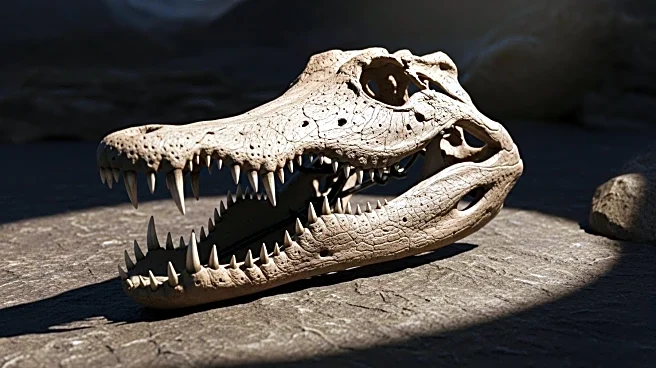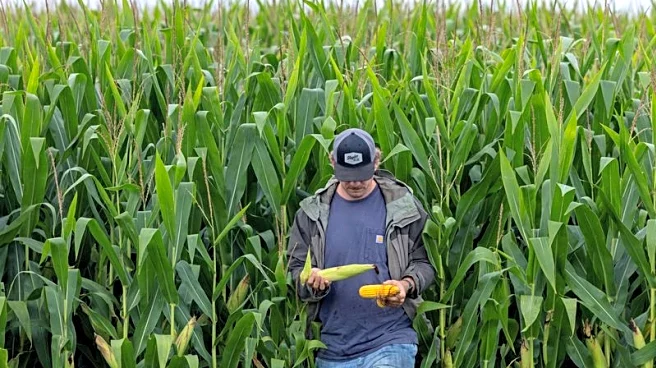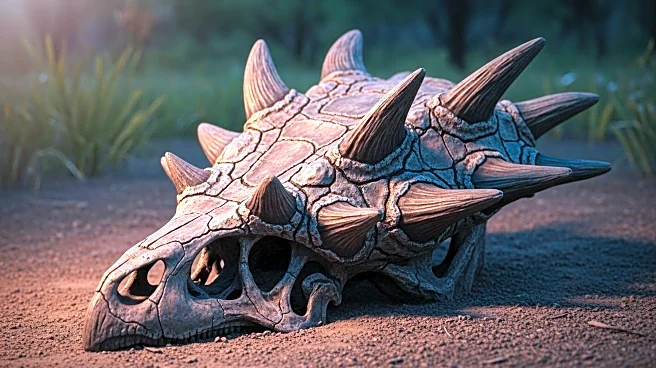Rapid Read • 8 min read
A team of researchers has uncovered the fossilized remains of a gigantic crocodile-like hypercarnivore named Kostensuchus atrox in southern Patagonia, Argentina. This extinct apex predator, which lived approximately 70 million years ago, was part of a group of reptiles related to modern crocodiles and alligators. The creature, measuring up to 11.5 feet in length and weighing around 550 pounds, was discovered in 2020. K. atrox was hypercarnivorous, with more than 70% of its diet consisting of meat. Its anatomy, including a broad snout, large teeth, and robust forelimbs, suggests it was capable of hunting large prey in the Cretaceous ecosystem of South America. The discovery was detailed in a study published in the journal PLOS One.
AD
The discovery of Kostensuchus atrox provides significant insights into the diversity of life during the Cretaceous period in South America. It highlights the presence of diverse terrestrial crocodylians that coexisted with dinosaurs, revealing a complex ecosystem where these reptiles played a crucial role. The findings underscore the evolutionary history of crocodyliforms and their ecological interactions with dinosaurs. This discovery also contributes to the understanding of the evolutionary lineage of modern crocodiles and alligators, offering a glimpse into the past biodiversity and predator-prey dynamics of ancient ecosystems.
Further research and analysis of the Kostensuchus atrox fossils are expected to provide more detailed information about its lifestyle, hunting strategies, and ecological role. Paleontologists may continue to explore the Chorrillo rock formation in Patagonia for additional fossils that could shed light on the region's prehistoric biodiversity. The study of K. atrox and other contemporaneous species could lead to a better understanding of the evolutionary pressures and environmental conditions that shaped the development of crocodyliforms and their interactions with dinosaurs.
The discovery of K. atrox also raises questions about the adaptability and resilience of crocodyliforms in changing environments. The presence of such a diverse group of reptiles during the Cretaceous period suggests that these creatures were highly adaptable, capable of thriving in various ecological niches. This adaptability may have contributed to the survival of their descendants, the modern crocodiles and alligators, through multiple mass extinction events.
AD
More Stories You Might Enjoy











